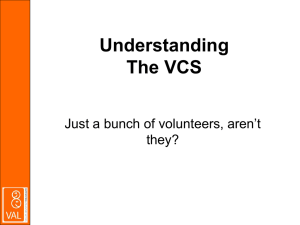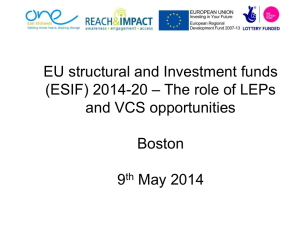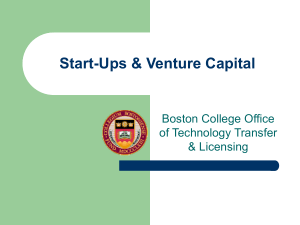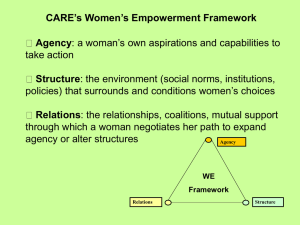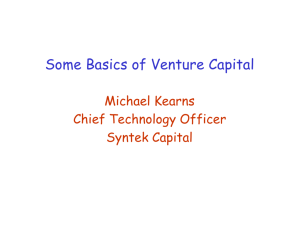How venture capital works
advertisement
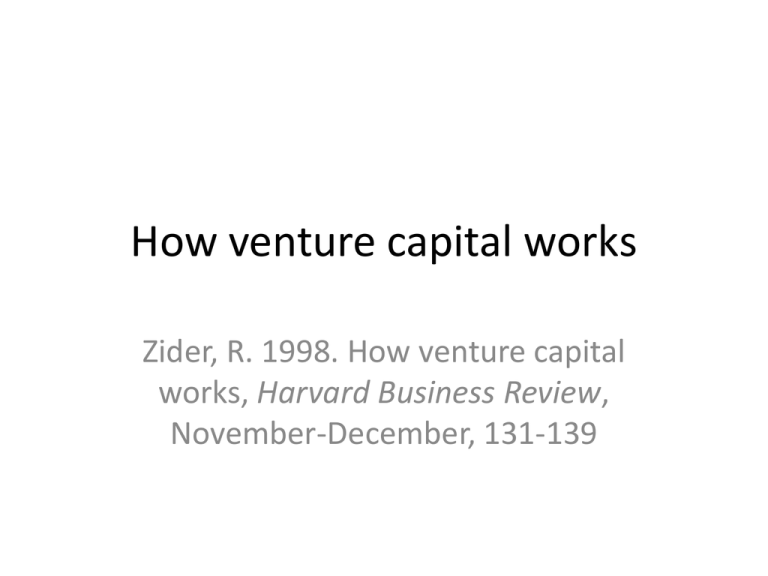
How venture capital works Zider, R. 1998. How venture capital works, Harvard Business Review, November-December, 131-139 VCs invest in high potential growth companies that will be game changers in their industries. If you work in an industry that is attracting attention from VCs, be ready for radical change VC system works for • • • • Entrepreneurs Institutional investors Investment bankers Venture capitalists Zider, 1998 Filling the void • Venture capital plays an important role in the stage of the company’s innovation life cycle when it begins to commercialize its innovation • > 80% of VC $ goes into building infrastructure needed to grow the business – in expense investments (mfrg capacity, marketing, sales) and the balance sheet (working capital and fixed assets) Zider, 1998 Timing is everything • > 80% $ invested by VCs goes into adolescent phase of a company’s life cycle • During this phase the financials of eventual winners and losers look highly similar Zider, 1998 The “adolescence” stage Zider, 1998 Several moving parts in execution: Assume 80% probability of success each Failure on any single step is NOT an option Zider, 1998 Logic of the deal • Term sheets offer downside and upside protections • Downside – Preferred stock gives VCs liquidation preference – Ratchets protect VCs from dilution if more $ needs to be raised at lower valuation – they keep their same % ownership position • Upside – can put additional $ into firm at predetermined prices – they can increase the stakes in successful firms below market prices Typical portfolio payout per $1,000 invested Zider, 1998 Zider, 1998 Profile of the ideal entrepreneur • Is qualified in a “hot” area of interest • Delivers sales or technical advances such as FDA approval with reasonable probability • Tells a compelling story and is presentable to outside investors • Recognizes the need for speed to an IPO for liquidity • Has a good reputation and can provide references that show competence and skill • Understands the need for a team with a variety of skills and therefore sees why equity has to be Zider, 1998 allocated to other people Profile of the ideal entrepreneur • Works diligently toward a goal but maintains flexibility • Gets along with the investor group • Understands the cost of capital and typical deal structures and is not offended by them • Is sought after by many VCs • Has realistic expectations about process and outcome Zider, 1998 Value of an individual to a VC • Is a function of these conditions: – # of people within the high-growth industry who are qualified for the position – The position itself (CEO, CFO, CTO, technician) – Match of person’s skills, reputation, and incentives to the VC firm – Willingness to take risks – Ability to sell oneself • Entrepreneurs who satisfy these conditions have strong negotiating position with VCs Zider, 1998 Entrepreneurs sought by multiple VCs should ask: • Who will serve on board and what is that person’s position in the firm? • How many other boards does the VC serve on? • Has the VC ever written and funded his or her own business plan successfully? • What, if any, is the VC’s direct operating or technical experience in this industry? • What is the firm’s reputation with entrepreneurs who have been fired or involved in unsuccessful ventures? Zider, 1998 Considerations for entrepreneurs • Understand what VCs want and reduce the uncertainty in their decision making • Understand how VCs will structure capitalization – you want 20% of a $500M company, not 100% of a $100,000 one • Innovate and sell into a new, highgrowth market




